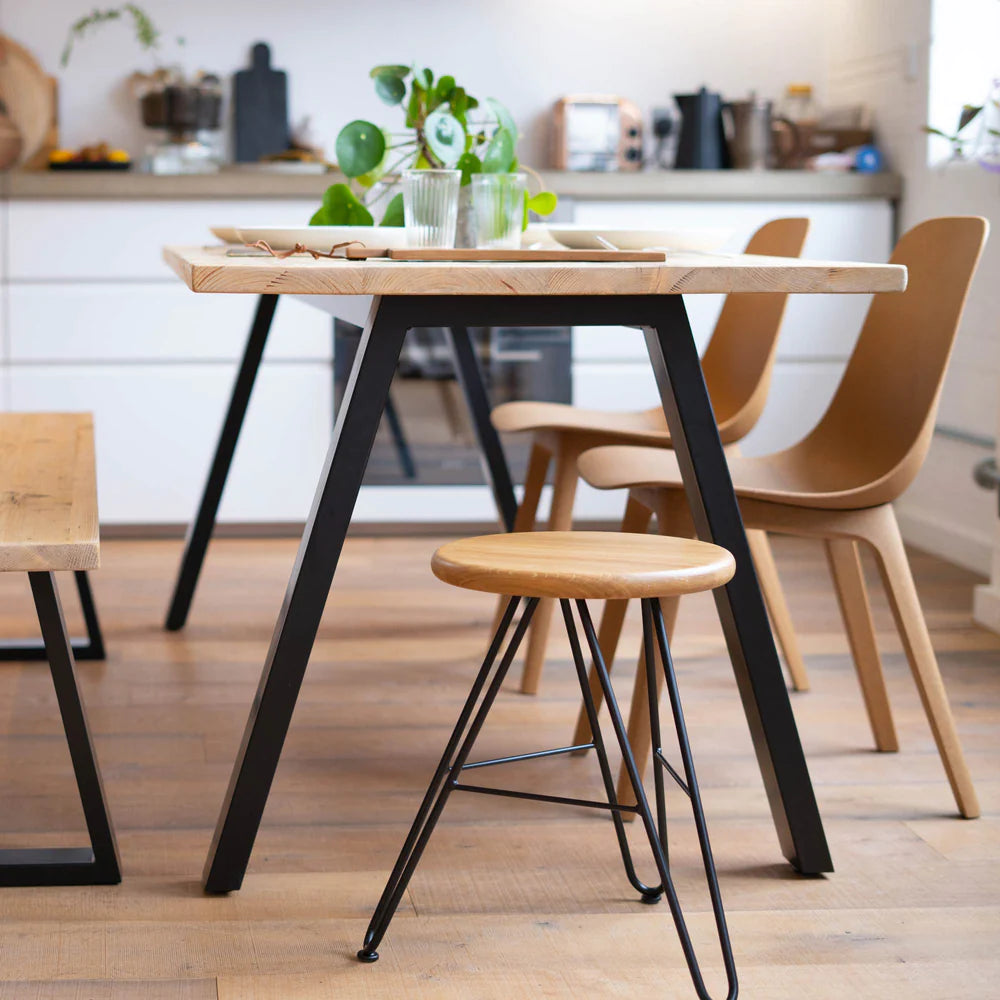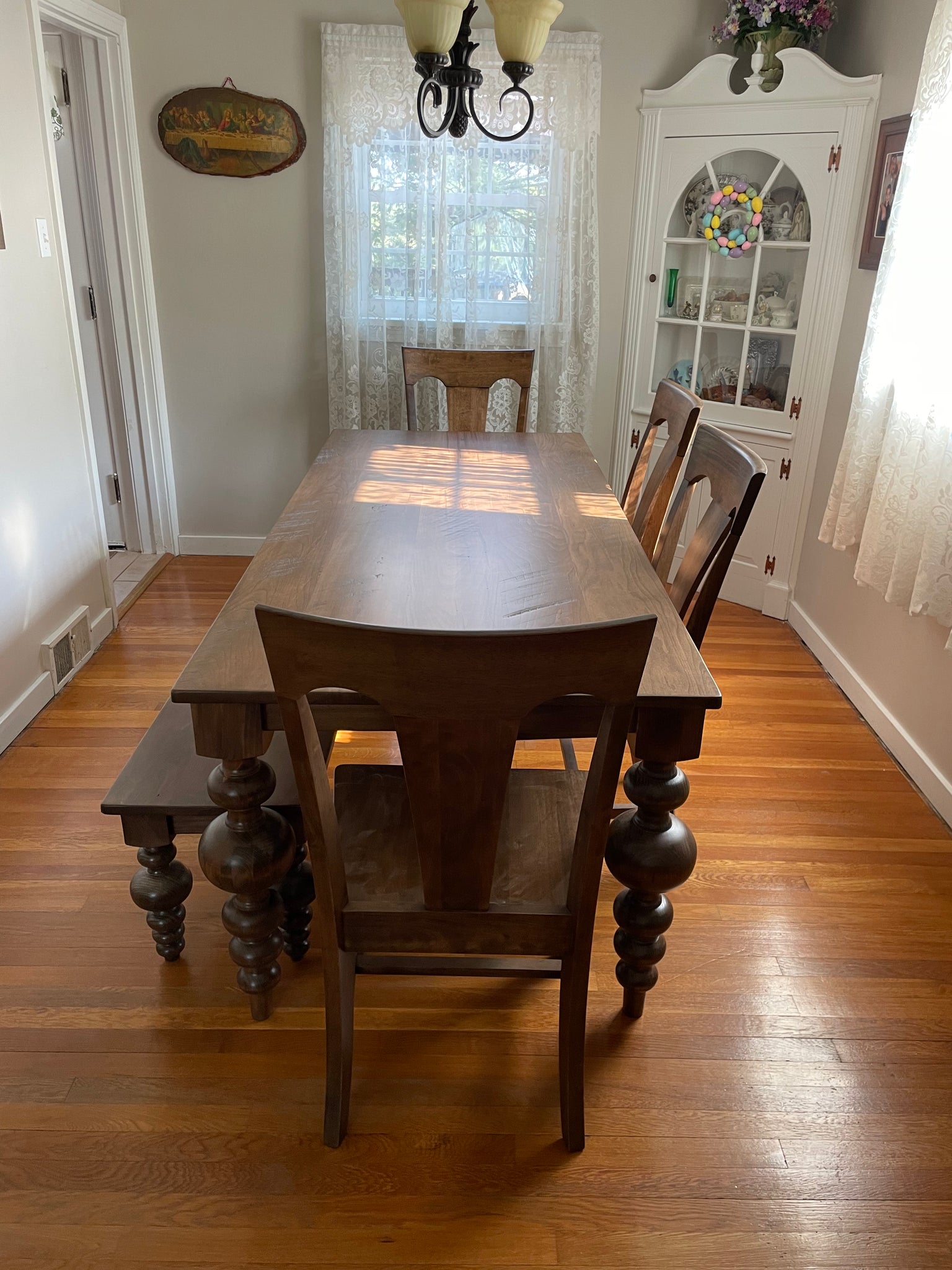Creative Ideas for Replacing or Refurbishing Your Dining Room Table Legs
Creative Ideas for Replacing or Refurbishing Your Dining Room Table Legs
Blog Article
From Typical to Modern: Discover the Ideal Dining Space Table Legs for Your Style
While timeless styles such as cabriole and turned legs evoke a feeling of ageless sophistication, modern designs like barrette and geometric options offer an opportunity for striking aesthetic interest. As you take into consideration these aspects, the question stays: how can you perfectly integrate these varied leg styles to create a harmonious eating experience?
Understanding Table Leg Styles
The variety of dining space table leg designs can dramatically influence both the visual appeals and capability of the room. Each leg design contributes unique sensible attributes and visual elements, dealing with varied design preferences and use demands. Comprehending these styles is crucial for choosing the appropriate dining table that straightens with your general interior decoration vision.
For example, conical legs provide a tidy, timeless appearance that can improve a space's style, while pedestal bases supply stability and make best use of legroom, making them suitable for smaller sized spaces. Barrette legs, a characteristic of mid-century modern-day design, introduce an industrial flair, permitting a ventilated, open feeling. Trestle legs evoke rustic beauty, giving robust support and a feeling of eternity.
In addition, the option of products plays a substantial duty. Wooden legs can bring warmth and structure, whereas steel options usually communicate a streamlined, modern ambiance. Inevitably, comprehending table leg designs is essential for producing a cohesive eating location that mirrors personal design while ensuring practicality and comfort. By attentively considering these aspects, you can boost both the useful and aesthetic charm of your dining area.
Traditional Table Leg Options
When picking dining-room table legs, traditional options frequently symbolize ageless style and craftsmanship. These styles mirror a rich heritage and a dedication to top quality, making them suitable for those that value traditional visual appeals.
Among the most legendary typical leg styles is the cabriole leg, defined by its graceful bent form. This style typically features attractive makings and is most typically found in Queen Anne and Chippendale furniture. One more prominent choice is the transformed leg, which boasts a series of smooth, rounded forms that give a classic appearance while maintaining stability.
Additionally, the straight leg, while easy, uses a sturdy and basic framework that can blend effortlessly with a variety of tabletop styles. For those drawn to ornate describing, claw-and-ball feet legs evoke a sense of splendour and can work as a spectacular focal factor in any kind of eating room.
Finally, pedestal bases, although not strictly legs, offer a different conventional option that enables ample legroom and can be magnificently sculpted. Each of these typical leg designs adds to the general atmosphere of an eating area, marrying function with visual allure.

Modern Table Leg Layouts
Modern table leg layouts use a varied variety of designs that stress innovative materials and clean lines. These styles commonly focus on functionality while offering as striking centerpieces within an eating space. Minimal appearances prevail, with legs crafted from materials such as steel, glass, and engineered timber, which click this add to a airy and contemporary feeling.
One popular design is the hairpin leg, identified by its slender, tapered structure that offers security without overwhelming the tabletop (dining room table legs). This design is typically located in mid-century modern furnishings and can effortlessly match numerous eating table shapes. An additional pattern is using geometric shapes, where legs might tackle unbalanced or angular forms, adding visual passion and a touch of creativity

Mixing Designs for Unique Spaces
Frequently, house owners seek to develop distinct dining areas that show their personal design by mixing various layout aspects. This technique enables the unification of diverse aesthetics, resulting in a harmonious yet distinctive environment. For example, pairing a rustic wood table with streamlined, modern-day metal legs can produce an eye-catching comparison that elevates the room's total charm.
Furthermore, integrating vintage table legs with modern tabletops can stimulate a feeling of background while preserving a contemporary perceptiveness. Such mixes not only display individual preference yet likewise urge creative thinking, permitting home owners to curate a room that really feels both personal and welcoming.
Color plays a critical role in this blending process; choosing table legs that complement or contrast with the existing color pattern can boost aesthetic passion. Whitewashed legs official website can soften the boldness of a dark table surface, creating a balanced aesthetic.
Tips for Selecting the Right Legs
Picking the right table legs is essential for attaining both performance and aesthetic appeal in your eating area. Begin by taking into consideration the total design of your area. Traditional setups gain from legs that include intricate makings or transformed layouts, while contemporary spaces may require smooth, minimalist styles.
Following, analyze the height and stability of the legs. dining room table legs. Basic table vary in between 28 to 30 inches in elevation, so make certain the legs match this dimension for convenience. Additionally, robust materials, such as wood or metal, can enhance stability and long life
Examine the leg shape as well-- alternatives consist of straight, tapered, or stand layouts. Straight legs offer a classic look, while tapered legs can include a touch of style. Pedestal bases give sufficient legroom and are optimal for smaller sized spaces.
Verdict
In summary, picking the ideal dining space table legs requires mindful consideration of both contemporary and traditional designs. Traditional alternatives such as cabriole and transformed legs offer classic style, while modern designs like barrette and geometric shapes offer a modern touch. By integrating leg style, height, and product with the total decor, a cohesive and welcoming ambience can be attained. Eventually, the chosen table legs need to reflect the wanted visual, enhancing the dining experience within the space.
The variety of eating space table leg styles can considerably affect both the aesthetic appeals and functionality of the room. Eventually, comprehending table leg designs is necessary for developing a cohesive dining area that shows individual design while ensuring usefulness and convenience.One of browse around this web-site the most iconic typical leg designs is the cabriole leg, characterized by its elegant rounded form. Straight legs supply a traditional look, while tapered legs can add a touch of style.In summary, choosing the optimal eating area table legs requires cautious factor to consider of both contemporary and standard designs.
Report this page